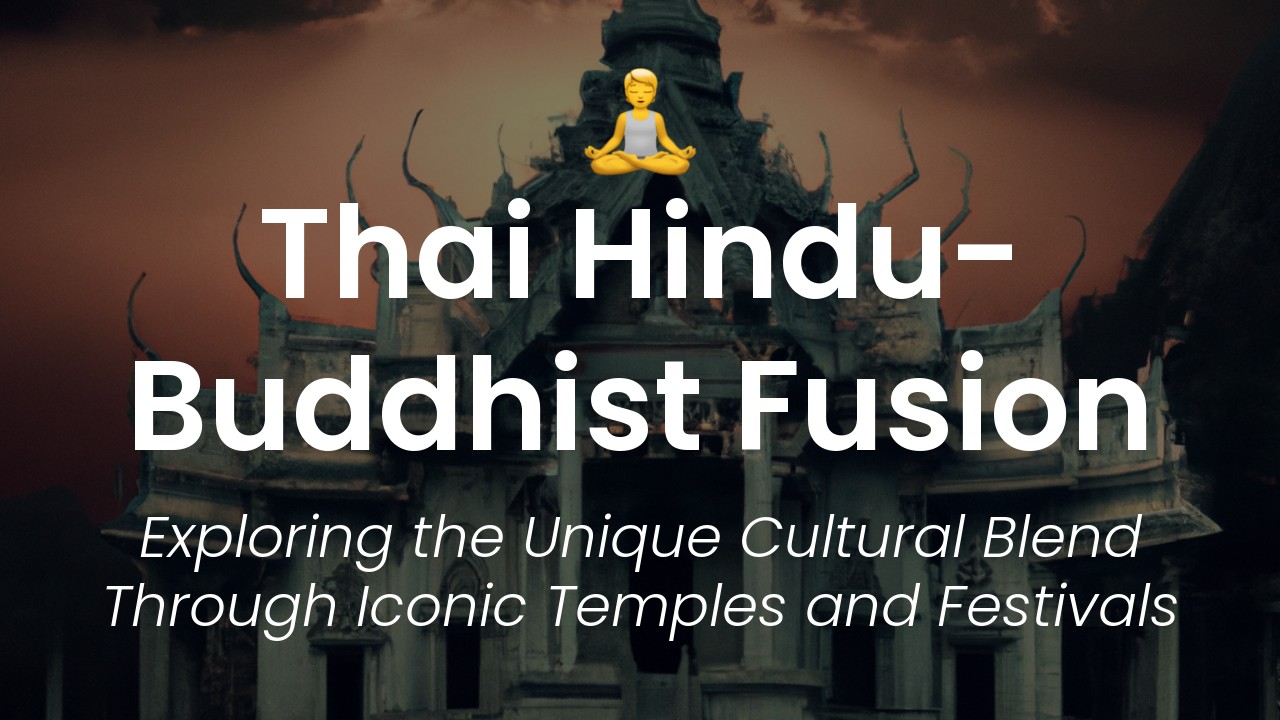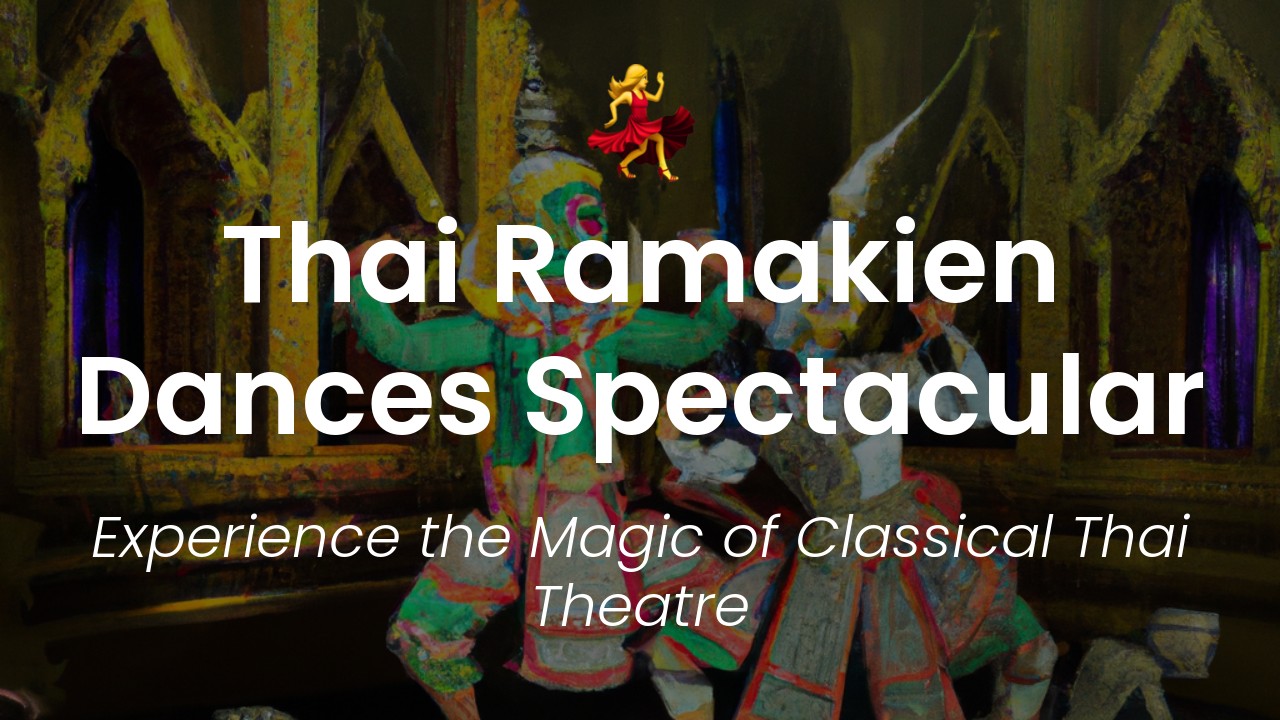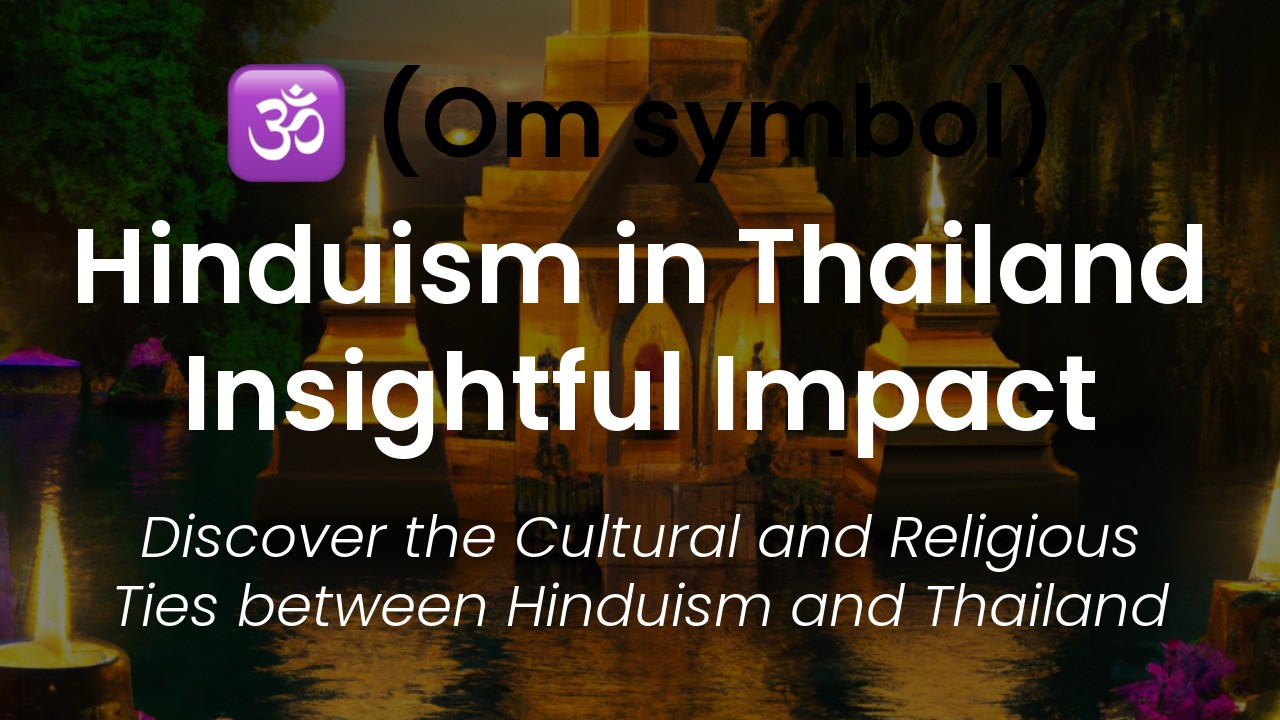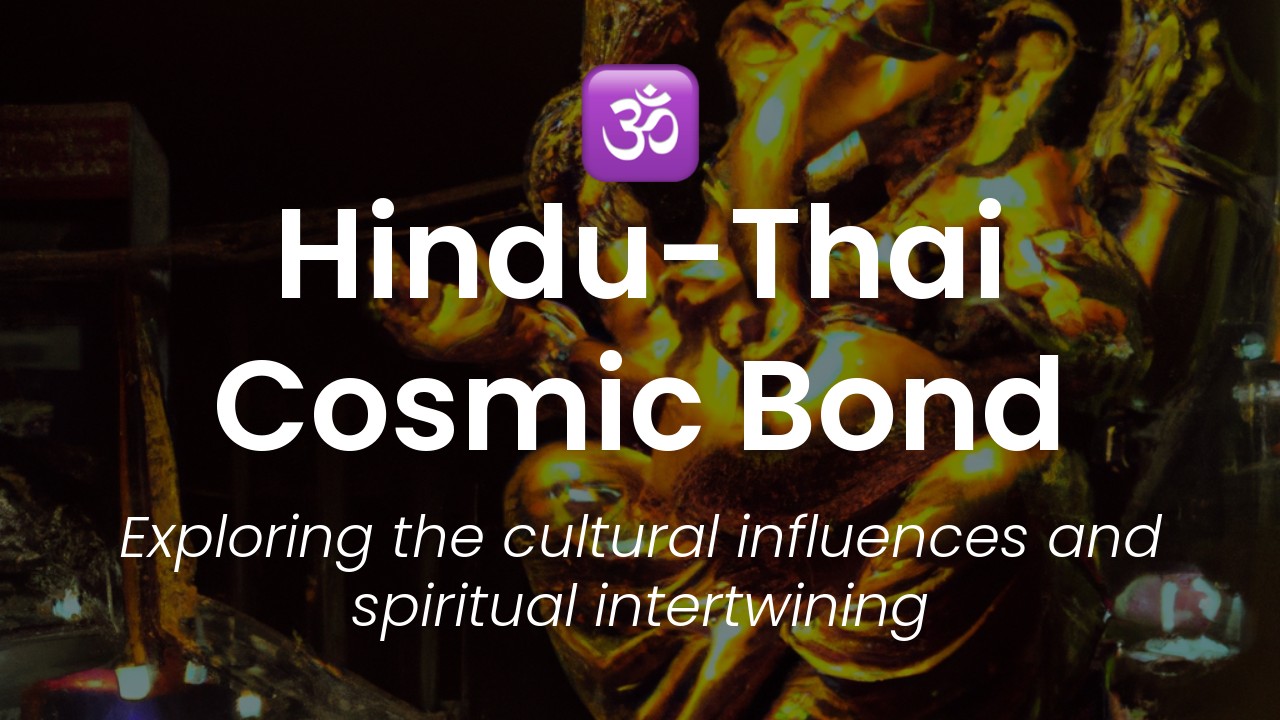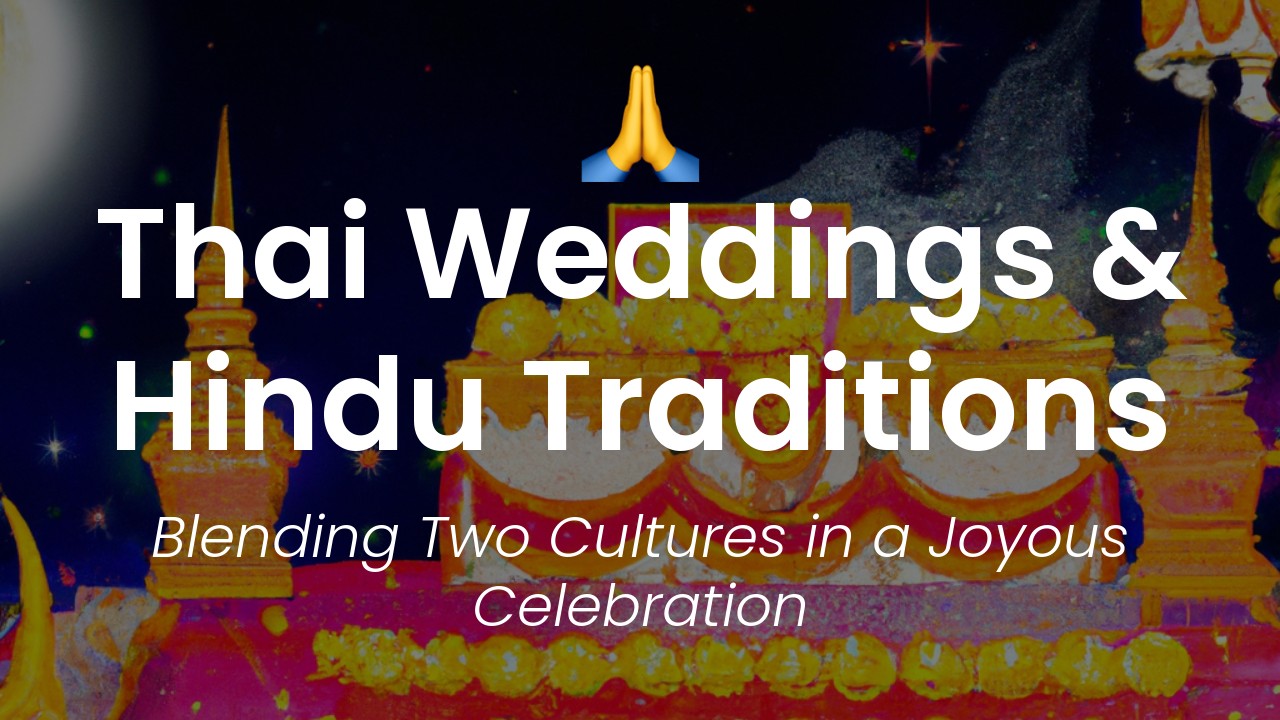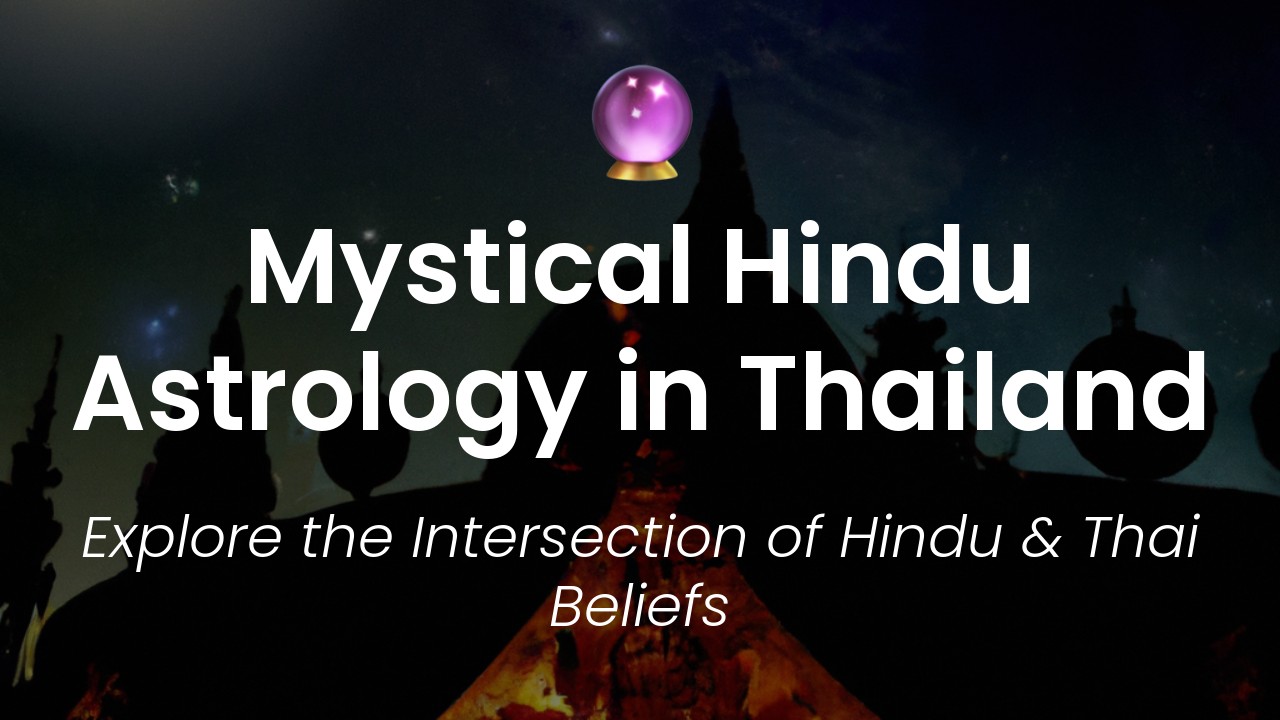Hello, lovely readers! Today's topic is something that is close to my heart – the unique combination of Hinduism and Buddhism in Thailand. As a country that has been influenced by both religions, it's no surprise that Thailand has managed to integrate them in such a fascinating way.
This phenomenon is best observed in some of the country's most famous landmarks, such as Wat Phra Kaew, also known as the Temple of the Emerald Buddha, which is located within the Grand Palace in Bangkok. Adorned with intricate carvings and gold leaf, this temple contains statues of Hindu deities such as Ganesha alongside those of Buddhist figures such as Buddha Shakyamuni.
But the influence of syncretism can also be found in everyday life in Thailand. From the way that many Thai people practise their religion to the language they speak, it's evident that the melding of both belief systems has led to a unique culture that can't be found anywhere else. For instance, many Thai words used in daily conversation are derived from both Sanskrit and Pali, two of the languages that are used in Hindu and Buddhist scriptures.
So join me on a journey as we delve deep into the fascinating world of Hindu-Buddhist syncretism in Thailand. We'll explore how these two religions have managed to intertwine in ways that are truly awe-inspiring.
Ancient Indian influences in Thailand
Thailand has a rich cultural heritage that was shaped by a variety of influences from neighboring countries like India. From artifacts to beliefs, Thailand embraced its Hindu-Buddhist past and created a unique cultural fusion that still exists today.
The ancient Indian influences can be seen in the art and architecture of Thailand. For example, Hindu mythology played a significant role in the decorative motifs and carvings that adorn many of Thailand's temples and shrines. The intricate designs of the nine-tiered umbrella at the top of temple spires bear a strong resemblance to the pagodas that are commonly found in India.
The spread of Buddhism in the region
Buddhism is the primary religion in Thailand now, with over 90% of the population identifying as Buddhist. However, Buddhism wasn't always the dominant religion; in fact, Hinduism was the dominant religion in the region from around 2000 BCE until the 5th century CE.
It was during the 5th century CE that Buddhism started to make its way to Thailand. The spreading of Buddhism was mainly due to the influence of Indian merchants and monks who traveled along trade routes. In the early 11th century, when Khmer Empire conquered Thailand, it brought Mahayana Buddhism along with it. During the Sukhothai period, Theravada Buddhism prevailed and is still the dominant form of Buddhism in Thailand.
Hindu-Buddhist art and architecture
The art and architecture of Thailand are a testament to the country's rich Hindu-Buddhist past. The Hindu and Buddhist influences can be seen in the elaborate and intricate designs of the structures. Temples in Thailand typically have a blend of these two religions, with the former represented by the complex and ornate peaked roofs, and the latter by the large Buddha images within the shrines.
One of the best examples of this fusion of Hindu-Buddhist architecture is the famous Wat Arun in Bangkok. The temple's towering spires and intricate designs reflect the influence of Hinduism and Buddhism.
The importance of Hindu gods in Thai culture
Despite Buddhism being the dominant religion, the deities of Hinduism still hold a significant place in Thai culture. There are several important Hindu gods that influence everyday life in Thailand, such as Indra – the lord of the heavens – and Brahma – the creator god.
A notable example of this influence is the Erawan Shrine in Bangkok. The shrine is dedicated to the Hindu god Indra and was constructed in 1956 as a way to ward off bad luck and bring good fortune. The shrine has become a popular spot for locals and tourists alike to pay their respects, light candles, and offer flowers.
The role of Buddhist beliefs in Thai society
Despite the strong influence of Hinduism in the region's past, Theravada Buddhism has come to dominate Thai society. The Buddhist beliefs have shaped the country's culture and traditions in countless ways over the years.
One of the most notable examples of this is the Songkran Festival – which originated as a Hindu festival – and is now celebrated as the Thai New Year. The festival is marked by water fights, the pouring of scented water, and the making of merit by offering food and donations at local temples.
Hindu-Buddhist festivals and rituals in Thailand
Thailand has a variety of festivals and rituals that reflect its Hindu-Buddhist past. Some of these festivals have religious significance, while others are simply an opportunity to enjoy the country's vibrant culture.
One such festival is Loy Krathong. Held annually in November, Loy Krathong is a ritual where people float krathongs (small floating baskets made from banana leaves and flowers) on rivers and canals to express their gratitude to the Goddess of Water.
Another festival is the Vegetarian Festival, which is celebrated by the Chinese-Thai community and is based on Chinese Taoism beliefs. Participants abstain from meat and perform acts of self-mutilation to purify their bodies and minds.
The enduring legacy of Hindu-Buddhist syncretism in Thailand
The enduring legacy of Hindu-Buddhist syncretism can be seen in many aspects of Thai culture, from the architecture to the religion. This rich and diverse history has shaped the country's culture and traditions, and continues to play a significant role in Thai society today.
Whether exploring the elaborate temples and shrines, participating in traditional festivals and rituals, or engaging with the locals, visitors to Thailand are sure to experience firsthand the fascinating blend of Hinduism and Buddhism that has shaped the country over the centuries.

